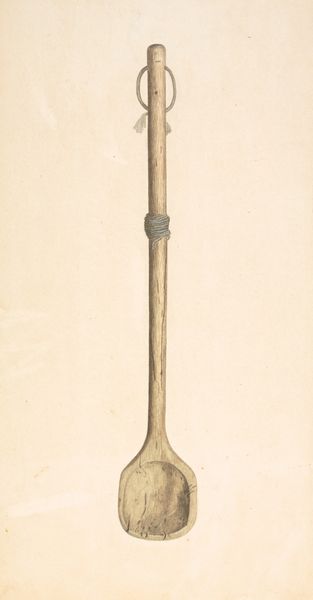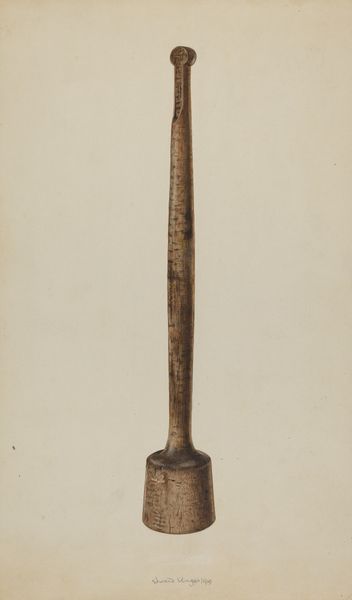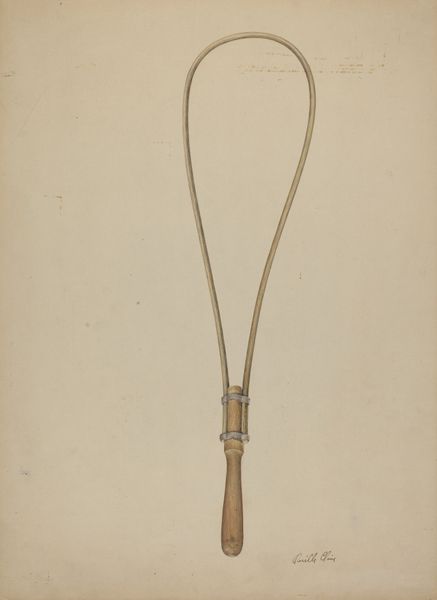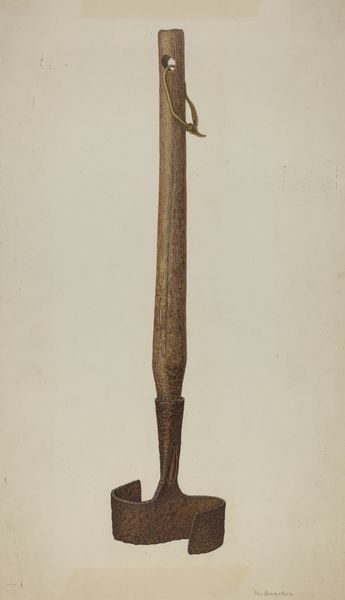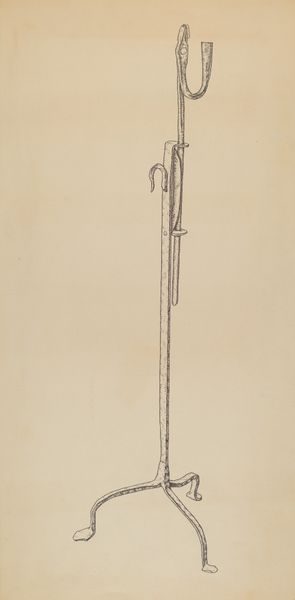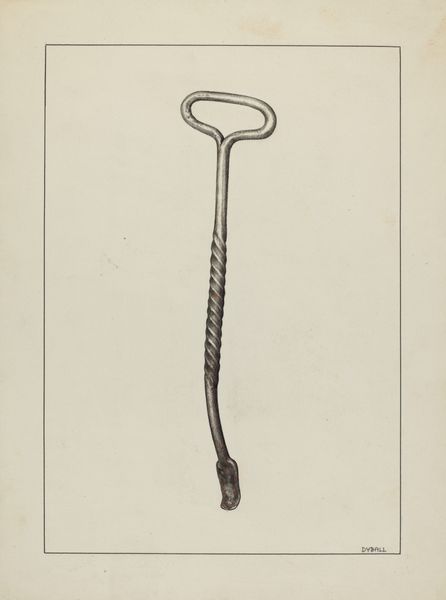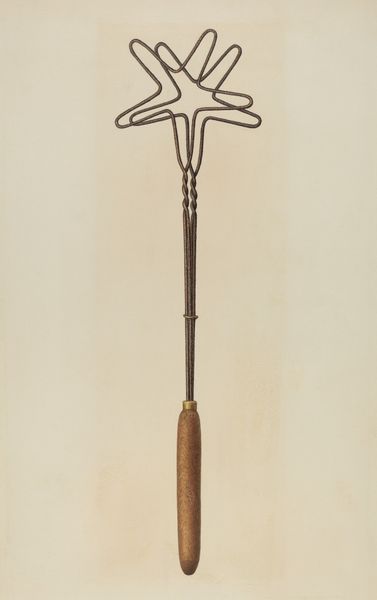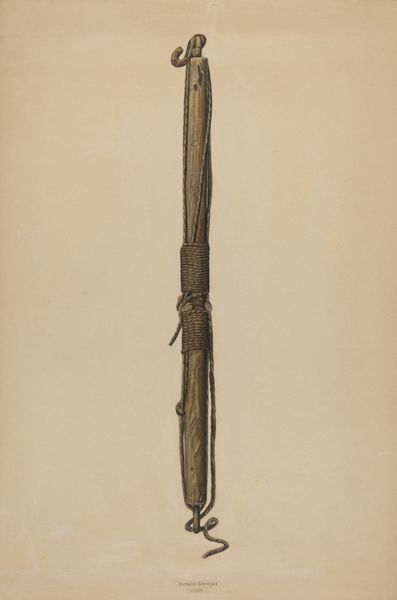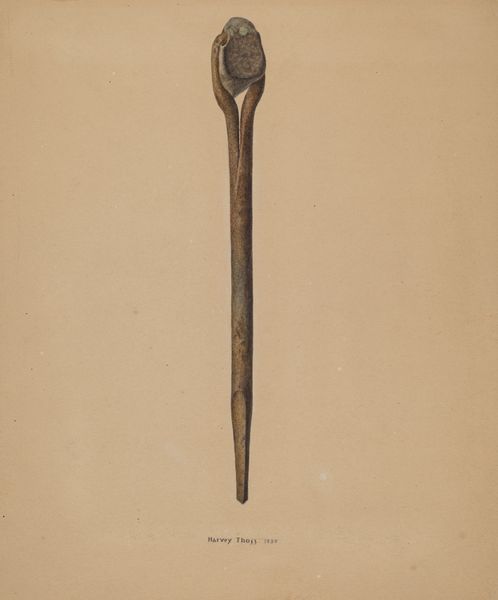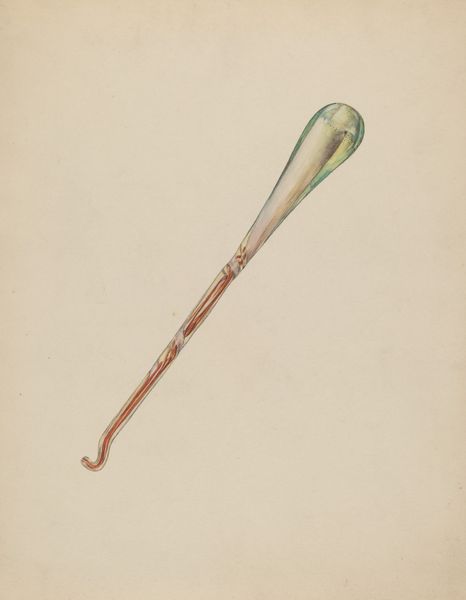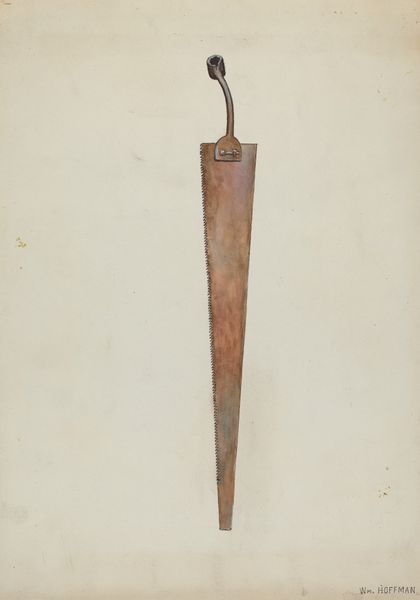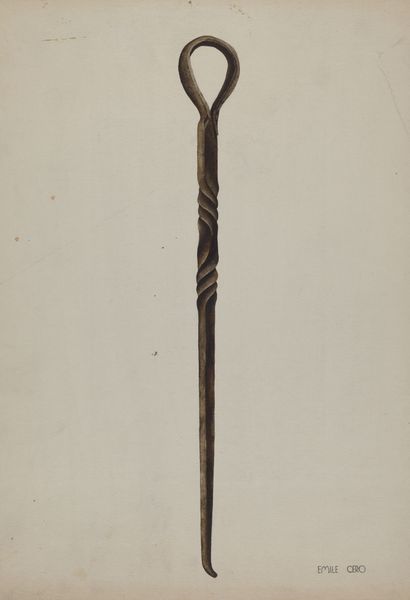
drawing, watercolor
#
drawing
#
water colours
#
oil painting
#
watercolor
#
watercolor
Dimensions: overall: 45.8 x 26.7 cm (18 1/16 x 10 1/2 in.)
Copyright: National Gallery of Art: CC0 1.0
Curator: Immediately, the delicate lines suggest fragility, a contradiction given the subject. It possesses an almost haunting presence. Editor: Indeed. What strikes you about this particular representation? The artist, T. Joyce, rendered this artwork named "Dagger" sometime between 1935 and 1942 using watercolor and oil painting. What aspects of its historical context do you find relevant in deciphering the subject? Curator: Given the socio-economic context of the interwar years, such depictions were often steeped in imperialistic nostalgia, perhaps serving to fetishize weapons of subjugation or romanticize colonial power dynamics. The piece becomes not just about the dagger itself, but about its value as an item of trade, as a material object. Editor: I see it somewhat differently. The contrast in the dagger’s components, namely the ivory handle shaped into an eagle and the blade’s metallic appearance, form a compelling study in the relationship between natural and manufactured forms. Curator: Well, beyond the symbolic, this blending of the natural with the synthetic invites speculation on trade routes, resource exploitation, and how those raw materials impacted or benefitted society at the time of its creation. What labour went into the manufacture? Was the ivory legally sourced? Editor: That's insightful, and indeed relevant. Focusing on formal qualities, observe how Joyce rendered a functional tool almost precious through his rendering, emphasizing form over utility. Curator: Ultimately, though, an object like this can only truly be understood within a web of material relationships— who produced it, who consumed it, and what processes of exchange supported its existence? Editor: Agreed. It's remarkable how the simplest of subjects can open avenues to understand historical and stylistic currents of the era. Curator: Yes, exactly. Examining its materiality in terms of both aesthetic value and production reveals rich perspectives about broader society.
Comments
No comments
Be the first to comment and join the conversation on the ultimate creative platform.
